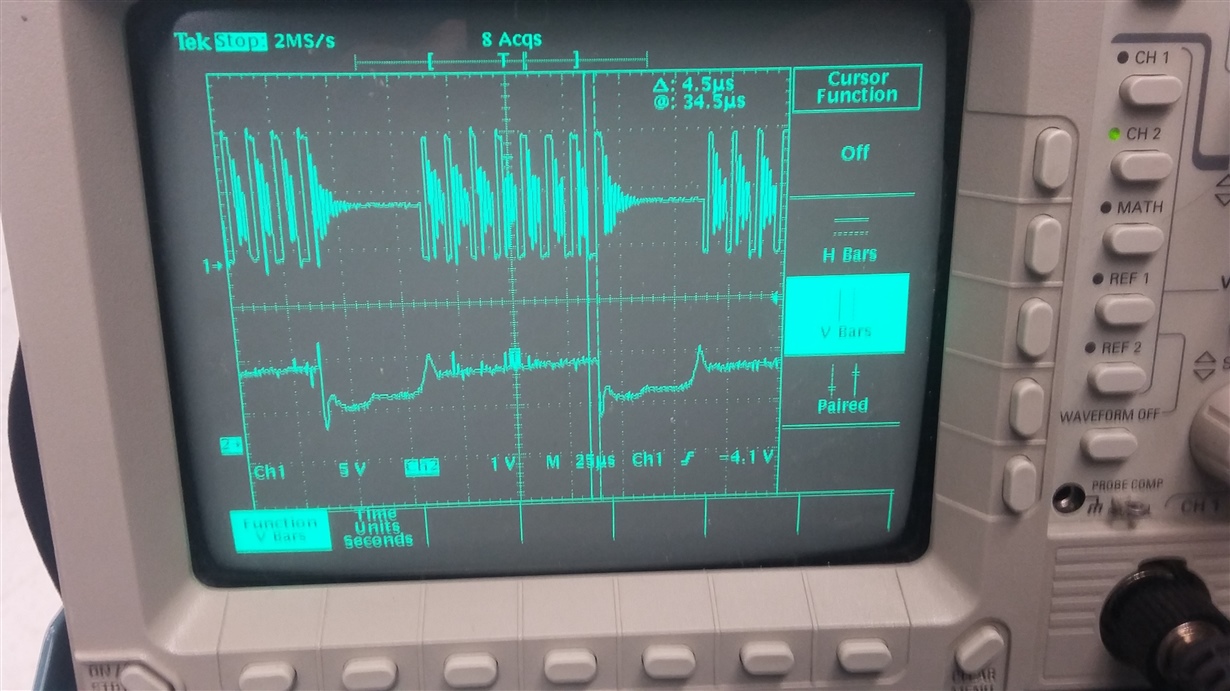Hello everyone,
I am trying to replicate the 5V, 2.5A DC-DC flyback converter as seen in this evaluation board: http://www.ti.com/tool/tps55340evm-148
My specifications are as follows:
Vin: 10V to 14V
Vout: 5V
Iout: 2.5A
As compared to the eval board, I have made the following modifications in my circuit:
1. Changed TLV431 (Vref = 1.25V) to TL431 (Vref = 2.5V). I have made changes to the voltage divider on the REF pin of the TL431. These resistors (R8 and R14) in my circuit are 4.7K and 4.7K.
2. I have temporarily removed D3, R6 and C18, which is the secondary side soft start circuit.
3. I am using the optocoupler PC817 instead of the TCMT1107 used in the eval board.
4. I am using a self assembled transformer instead of the Coilcraft part used in the eval board. Details of the transformer given below:
Core type: EE
Core center limb breadth, width: 5 mm
Core height: 10 mm
Lprim : 1.66 uH
Nprim : 9 turns
Nsec : 5 turns
Problems I am facing:
1. Output voltage drops from 4.94V to 2.2V when I load the circuit with a 25 Ohms resistor.
2. Switching frequency is around 87 KHz which is 1/4th of the desired switching frequency of 350 KHz. (Frequency foldback feature showing collapsed output.)
3. Optocoupler does not turn on (no current seen through the resistor which is in series with optocoupler diode (R9)).
4. Voltage at cathode of TL431 is 4.1V.
I don't know why the controller is operating in frequency foldback. This feature is supposed to be active only in case of over current protection.
Please help. Thanks for your time and effort in advance.
With regards.



